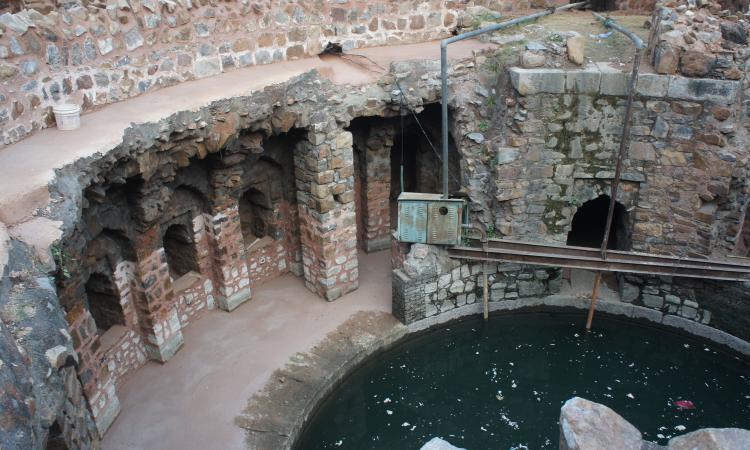
Green pastures and meadows, tall trees, lakes, wells and the river…those are my memories of Delhi. It wasn’t too long ago that one woke up early to the sounds of lawns being watered, children running off to school and people walking in the parks. A flurry of activity but quite different from what it is today.
Loud horns from school buses, people returning from night shifts at work and the loud hum of the motor pumping water for the day – this is what one hears early morning nowadays. Blame it on our changed lifestyle…supposedly a trade-up in order to embrace a better standard of living. Open spaces being replaced by landfills and shopping complexes, and wells and lakes replaced by tankers carrying poor-quality water – have we really traded up?
Groundwater is Delhi’s substantial supplement source of drinking water. With the levels at their lowest ever – below 132 feet – the motors will have to run longer causing Delhites to spend more on electricity but they still won’t have enough water. The situation may be worse than expected for those in the south, southwest and northwest parts of Delhi where the sharpest fall has been recorded (i.e. 9.76 to 14.07 m). This fall is despite a 13-year old strict ban on building borewells and other similar structures that are used to extract water.
The bad news is that the falling groundwater level is not the only worry for the 1.68 crore and counting Delhites. The city is running out of space to accommodate the sewage, runoff from landfills and discharge from open and broken drains, which seep into the groundwater and pollute it. Water quality is highly suspect due to containing a high level of nitrates, fluorides, salinity and heavy metals such as lead, cadmium and chromium – impurities that can cause health problems to people that consume it. Why isn't this being treated before reaching the Delhi Jal Board's piped water supply or the tankers that we are so dependent on?
Lack of funds, lack of planning and lack of metering are some reasons. To fix this, Delhi is now going to spend around Rs. 25000 crore on a Sewage Master Plan 2030 for the city’s sewage and drainage. In addition, the proposed Rs. 3600 crore Renuka Dam is supposed to provide 275 million gallons of water per day to quench Delhi’s thirst. Also, the Delhi Jal Board is revising its Rs. 1 lakh subsidy to boost rainwater harvesting at individual and institutional levels in the city.
Groundwater has become just one more trade-off for business centres, industrial hubs and other so-called measures of growth and development. The capital city needs its businesses to stay in the race. Today, Delhi is as rich a city as Mumbai. It has become the city-everybody-wants-to-move-to given Mumbai’s increasing intolerance to migrants.
The Delhi that had over 800 water bodies - lakes, Baolis (step-wells), Naadis (ponds) and wells is no more. Today it has malls, shopping arcades, tech parks and more. It has been the nation’s capital for over 3000 years. Different eras and different dynasties transformed it into what they thought was best. Is this our idea of what’s best?
The words of Rachel Carson, an American marine biologist come to mind,
“In an age when man has forgotten his origins and is blind even to his most essential needs for survival, water along with other resources has become the victim of his indifference.”
It remains to be seen who the real victim is.
To read more click here
To download the Central Groundwater Board Report